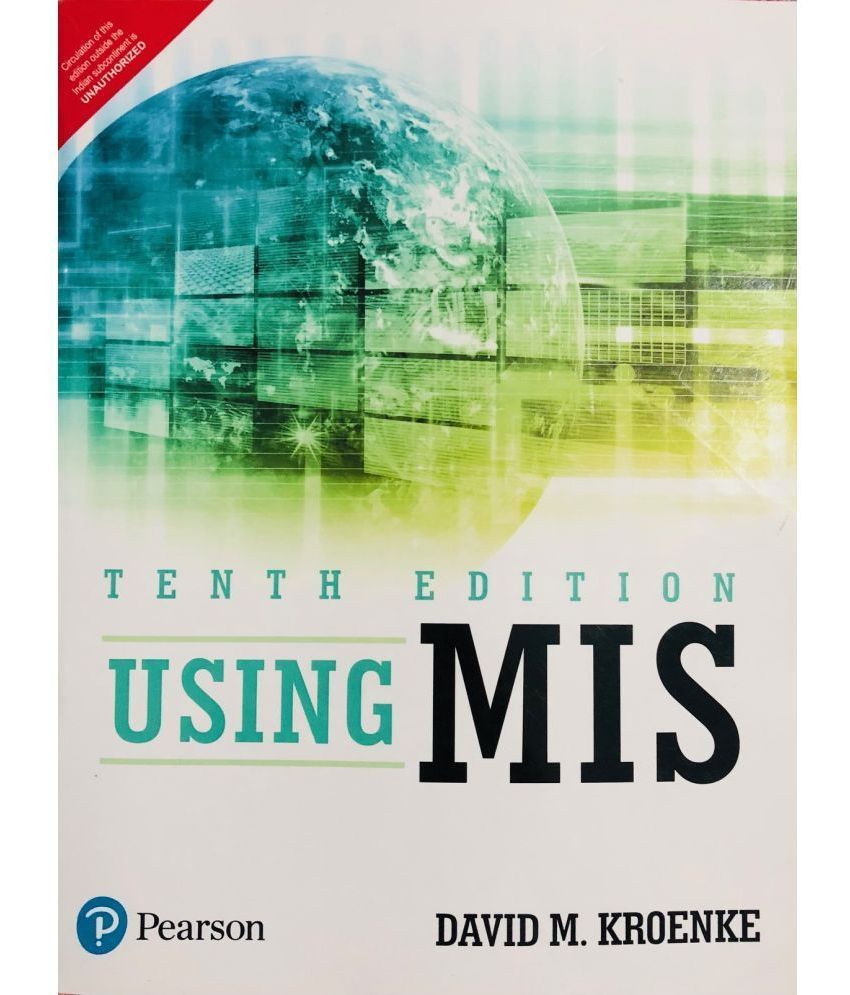Technology is rapidly changing the way organizations do business–and knowledge of MIS is critical to keeping up. Comprehensive and up-to-date, Using MIS shows students how organizations use information systems to solve business problems every day. The 10th Edition now includes new content on using virtual reality and artificial intelligence, along with 11 new Career Guides, five new Ethics Guides, and five new Security Guides.
Features
· Guides: Each chapter includes three guides that focus on current issues in information systems. One addresses ethics, one addresses security, and the third addresses information systems careers.
· Chapter Introduction Business Example: Each chapter begins with a description of a business situation that motivates the need for the chapter’s contents. The authors focus on two different businesses over the course of the text: Falcon Security, a provider of aerial surveillance and inspection services; and ARES, an augmented reality exercise startup opportunity.
· Query-Based Chapter Format: Each chapter starts with a list of questions, and each major heading is a question. The Active Review contains tasks for students to perform in order to demonstrate their ability to answer the questions.
· So What?: Each chapter of this text includes an exercise called “So What?” This feature challenges students to apply the knowledge they’ve gained from the chapter to themselves, often in a way. The goal is to drive home the relevancy of the chapter’s contents to their future professional lives. It presents a current issue in IS that is relevant to the chapter content and asks students to consider why that issue matters to them as future business professionals.
· 2027?: Each chapter concludes with a discussion of how the concepts, technology, and systems described in that chapter might change by 2027.
· Active Review: This review provides a set of activities for students to perform in order to demonstrate their ability to answer the primary questions addressed by the chapter.
· Using Your Knowledge: These exercises ask students to take their new knowledge one step further by applying it to a practice problem.
· Collaboration Exercises: These exercises and cases ask students to collaborate with a group of fellow students, using collaboration tools introduced in Chapter 2.
· Case Studies: Each chapter includes a case study at the end.
· Application Exercises: This appendix of Excel and Access exercises asks students to use spreadsheet and database skills.
· International Dimension: This module at the end of the text discusses international aspects of MIS. It includes the importance of international IS, the localization of system components, the roles of functional and cross-functional systems, international applications, supply chain management, and challenges of international systems development.
About the Author
David M. Kroenke, Bowling Green State University
Randall J. Boyle, Weber State University
Table of Contents:
I. Why MIS?
1. The Importance of MIS
2. Collaboration Information Systems
3. Strategy and Information Systems
II. Information Technology
4. Hardware, Software, and Mobile Systems
5. Database Processing
6. The Cloud
III. Using IS for Competitive Advantage
7. Processes, Organizations, and Information Systems
8. Social Media Information Systems
9. Business Intelligence Systems
IV. Information Systems Management
10. Information Systems Security
11. Information Systems Management
12. Information Systems Development
The International Dimension
Application Exercises
Glossary

